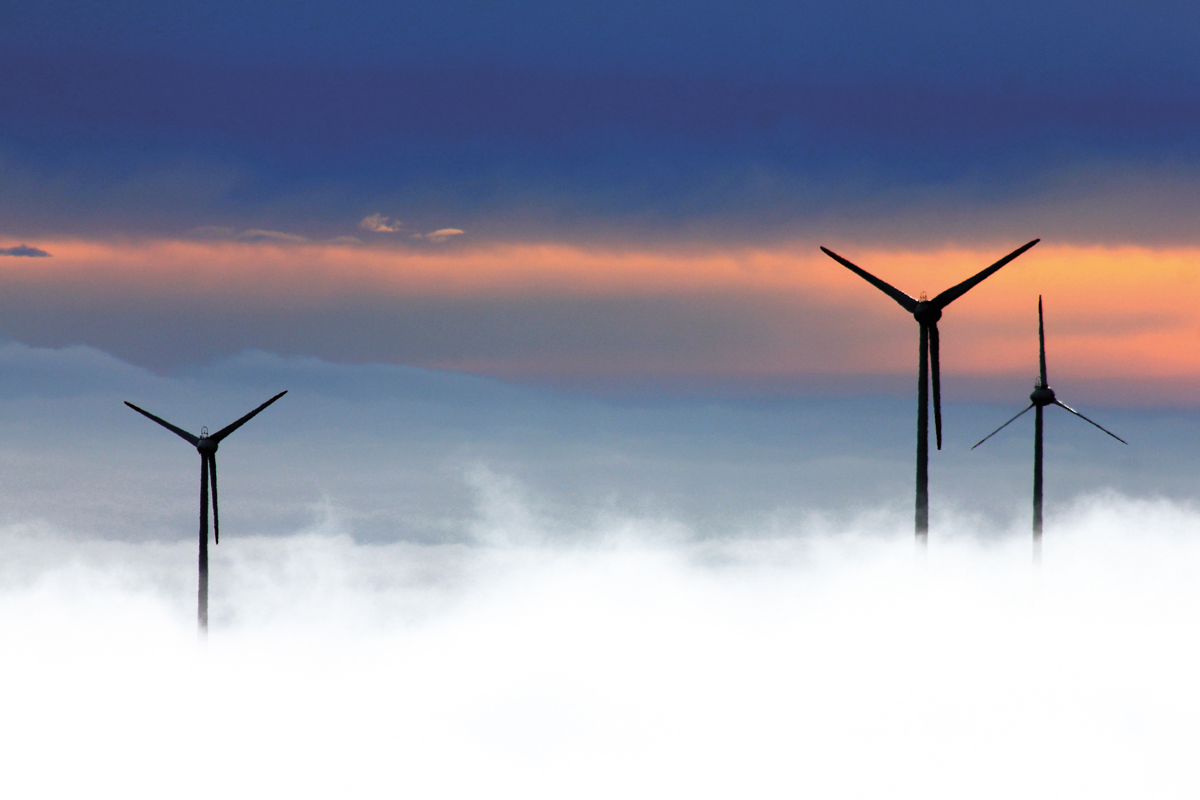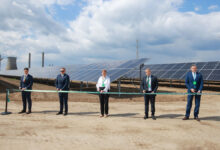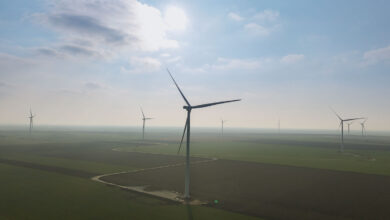European Investment Bank to boost wind farms
The European Investment Bank (EIB) is providing EUR 48 million of finance for the construction and operation of three new wind farms in Austria (Kreuzstetten IV, Dürnkrut II and Hipples II) with a total capacity of 39 MW. The facilities will be operated by Windkraft Simonsfeld AG, which has been running wind farms successfully in Austria since the end of the 90s. The overall capacity of the wind farms operated by Windkraft Simonsfeld AG currently amounts to 168 MW.
The bulk of the EIB financing package – EUR 35m – will go to Windpark Kreuzstetten IV GmbH, a wholly owned subsidiary of Windkraft Simonsfeld AG, responsible for building and operating the three planned wind farms. This financing operation has been made possible by the European Fund for Strategic Investments (EFSI), commonly known as the ‘Juncker Plan’. EFSI is the main pillar of the Investment Plan for Europe (IPE), under which the EIB Group and the European Commission are working together as strategic partners to boost the competitiveness of the European economy. The remaining EUR 13 million of EIB funds will be advanced for project financing via Erste Bank Österreich.
“The promotion of sustainable, competitive and secure sources of energy is a key EU policy objective and a priority sector for EIB financing. We are very pleased to be able to promote the development of renewable energies in Austria in close cooperation with our Austrian partners. The Kreuzstetten, Dürnkrut and Hipples wind farm projects are a clear sign that Austria takes climate and environmental protection very seriously,” The EIB Vice-President responsible for operations in Austria, Andrew McDowell, said.
“This positive decision reflects the new reality – the EU’s resolute transition to clean energy. Austria in particular is well on track to reach its 2020 target for renewable energy. These are precisely the steps we need in order to pave the way to a swift implementation of the Paris agreement,” Maroš Šefčovič, Commission Vice-President responsible for Energy Union, also highlighted.
2018, a year of strong growth
“2018 will be a year of strong growth for us. We are installing 13 additional wind power plants with a nominal output of 39 MW, increasing our production capacity by 22%,” stated Windkraft Simonsfeld AG’s CEO Martin Steininger. “The volume of electricity produced by these new wind power plants corresponds to the consumption of more than 25,000 households – an important step in the fight against climate change.”
Over the next four years, the medium-sized company intends to build a further 18 wind power plants in Austria, which have already been approved, providing a substantial boost to the country’s wind power generation.
Windkraft Simonsfeld AG operates 78 wind power plants in Austria and two in Bulgaria. With its headquarters in Lower Austria, Windkraft Simonsfeld AG generated 464 million kWh of electricity in 2017, which is equivalent to the consumption of 116,000 households. The over-the-counter joint stock company is owned by almost 2,000 shareholders.
Investment Plan for Europe
The Investment Plan for Europe (the Juncker Plan) is one of the EU’s key actions to boost investment in Europe, thereby creating jobs and fostering growth. To this end, smarter use will be made of new and existing financial resources. The EIB Group is playing a vital role in this investment plan. With guarantees from the European Fund for Strategic Investments (EFSI), the EIB and EIF are able to take on a higher share of project risk, encouraging private investors to participate in the projects. In addition to EFSI, the new EIAH advisory platform helps public and private-sector project promoters to structure investment projects more professionally. The investment plan should also create a more investment-friendly EU regulatory environment, particularly in the digital, energy and capital markets sectors. In December 2017, the European Parliament and Member States reached an agreement to extend the duration of EFSI and increase its financial capacity.
Wind power in Romania
According to WindEurope – the voice of the wind industry, actively promoting wind power in Europe and worldwide – Romania ranked number one in the top of countries with the highest share of wind in their electricity demand.
Country Share of wind in the national electricity demand
1. Romania 26% = 44 GWh
2. Portugal 25% = 38 GWh
3. Greece 25% = 37 GWh
4. United Kingdom 22% = 213 GWh
5. Spain 19% = 148 GWh
6. Austria 10% = 22 GWh
7. Belgium 8% = 23 GWh
8. Denmark 8% = 9 GWh
9. Bulgaria 6% = 7 GWh
10. Sweden 5% = 21 GWh
The cheapest form of new power generation in Europe
As Members of the European Parliament gave a resounding vote in favour of renewables in Europe (a target of 35% for 2030 – rather than the 27% which the European Commission proposed in 2016), Giles Dickson, WindEurope CEO, is gladly supporting this initiative.
“Good on the Parliament. 35% makes sense economically. Consumers benefit – wind is now the cheapest form of new power generation in Europe. And wind is a key part of European manufacturing and exports – it supports 263,000 jobs in Europe industry and contributes EUR 36bn to EU GDP. A 27% target puts all that at risk. And 27% carries a major opportunity cost. The difference between 27% and 35% in wind is EUR 92bn investments not made and 136,000 jobs not created. And other sectors would miss out too with a lower target: every EUR 1,000 invested in wind creates EUR 250 value for the wider supply chain including chemicals, steel and construction.
The Commission is starting to get it: they think going beyond 27% is cost-effective. Denmark and Portugal are also calling for a higher target: others in the Council now need to reconsider,” Giles Dickson stated.







